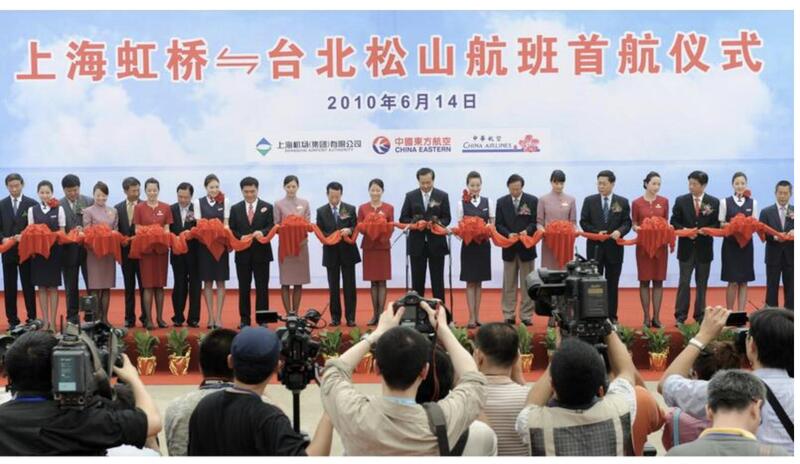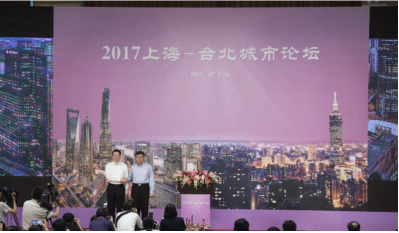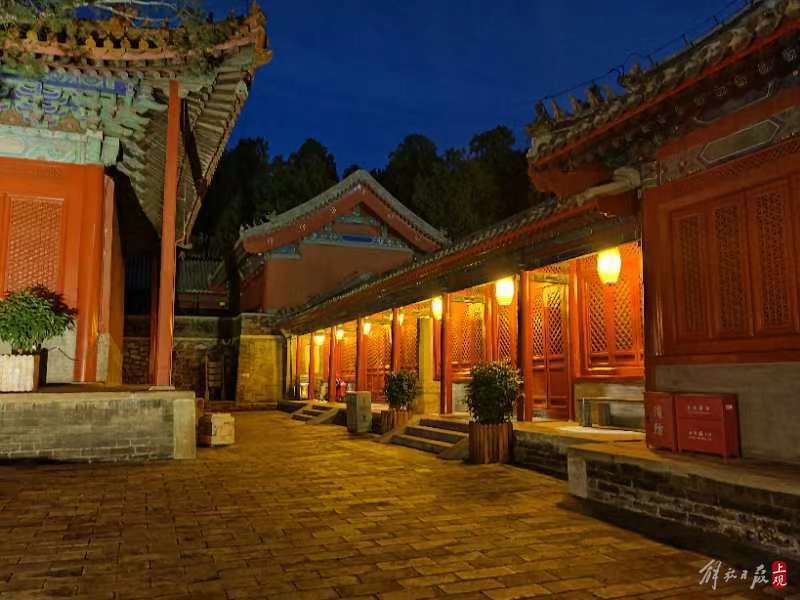Why do Shanghai Mayor Gong Zheng and Taipei Mayor Jiang Wan'an still meet?, Cross Strait Relations are Severe and Complex, Two Cities | Cities | Mayors
Shanghai and Taipei are 700 kilometers away in a straight line, with a direct flight time of only 2 hours.
On August 30th, 2023, the Twin Cities Forum arrived as scheduled, and Shanghai Mayor Gong Zheng and Taipei Mayor Jiang Wan'an will discuss urban development together. The outside world expects that the Twin Cities Forum, which has been offline for three years, will provide new impetus for institutionalized exchanges between the two sides of the Taiwan Strait, enhance people's sense of gain with tangible results, and truly implant the concept of "one family on both sides of the Taiwan Strait" and "a community with a shared future on both sides of the Taiwan Strait" into the hearts of the people.
Never just sit and talk
Chen Chao, the director of the Shanghai Library, still remembers his feelings during his inspection of the Taipei Municipal Library in 2019. "There, readers can have zero distance contact with art. The library is not only the ocean of books, but also the hall of art.". Inspired by this, the East Pavilion in the picture invited 10 domestic and foreign artists to create public art works in the museum. The "Tower of Knowledge" on the north side of the third floor was designed by Taiwanese artist Liu Wenxuan, with nearly 8000 book index cards spiraling up, vividly illustrating the "path of diligence in the mountain of books.".

There are still many cases of such exchanges between Shanghai and Taiwan. Shortly after the first Twin Cities Forum in 2010, Shanghai Hongqiao Airport and Taipei Songshan Airport achieved direct flights, forming a one day living circle between Shanghai and Taiwan. Afterwards, the exchange and cooperation between the two cities entered the "fast lane", and so far 42 memorandums of exchange and cooperation have been signed. In the past 13 years, Taipei's neighborhood chief model, citizen hotline, medical and health insurance, and revitalization of the old city have become examples of learning in Shanghai; Shanghai's infrastructure, transportation management, smart city, and digital industry have also benefited Taipei greatly.
"The Twin Cities Forum is never just a sit and talk forum." According to Li Mi, Executive Director of the Shanghai Institute of Public Relations, through this institutionalized platform, Shanghai and Taipei share experiences and exchange ideas in various fields of urban governance, improving the well-being of the people in both places, and the spillover effect is becoming increasingly apparent.
Taking the environmental protection concerns of citizens in both regions as an example. As early as the 2010 Twin Cities Forum, Shanghai and Taiwan signed a Memorandum of Understanding on Environmental Exchange and Cooperation. "Shanghai has its own characteristics in air pollution control and environmental impact assessment management, while Taipei has strengths in garbage classification and environmental education." Yan Bo, Director of the Shanghai Municipal Bureau of Ecology and Environment, introduced that the two cities maintain close contact and mutual visits, and have formed a series of exchange achievements in areas such as PM2.5 source analysis and household waste reduction that are crucial to people's livelihood, promoting continuous improvement of environmental quality in both cities.
At the same time, with the help of the dual city forum mechanism, more and more citizens are entering each other's cities to experience the friendship between Shanghai and Taiwan in person - grassroots cadres from the two places can go to each other's cities to serve as neighborhood committee directors or neighborhood chiefs for a day; Young students from Shuangcheng can experience the campus culture of different cities; Long distance running enthusiasts from Shanghai and Taiwan will go to the opposite bank to participate in marathon races... Even if the epidemic is blocked, online communication between the two cities has never stopped. A series of grassroots exchanges have narrowed the distance between each other, consolidated the friendly soil between the two cities, and created more favorable conditions for cross-strait cooperation and closer ties.

"Continuously communicating and constantly learning from each other," some scholars believe that this is the charm of the Shuangcheng Forum's frequent updates.
From mutual reference to answering the same question together
In interviews, many scholars mentioned that in the face of increasingly fierce global urban competition, the significance of the Twin Cities Forum and even Shanghai Taiwan exchanges has expanded from mutual learning and learning between the two cities in the past to answering challenges together, and then the two cities work together towards the future.
"Guests from both sides of the forum will discuss topics such as digital economy, low-carbon sustainability, and smart healthcare, which are actually areas that the two governments want to break through but are not easy to break through." Sheng Jiuyuan, Executive Director of the Taiwan Research Center at Shanghai Jiao Tong University, takes low-carbon sustainability as an example. As a densely populated and economically prosperous metropolis on both sides of the Taiwan Strait, both Shanghai and Taiwan are facing the issue of how to use low-carbon thinking and low-carbon technology to improve urban operation modes and change the way citizens live. In recent years, the two cities have made beneficial explorations in the use of green energy and carbon emissions trading, but there are still shortcomings. Both parties can deepen communication through the forum, gain targeted and forward-looking experiences, and find a sustainable development path that suits themselves.

Experts believe that if such common topics can be hotly discussed and some consensus can be reached at the venue, in a sense, it is also seeking new space and momentum for future cooperation between the two cities and even between the two sides of the Taiwan Strait, thereby promoting peaceful and integrated development between the two sides.
Also following this Twin Cities Forum are Taiwanese compatriots living and working in Shanghai. "The smooth hosting of the forum is a positive signal that allows me to stay in Shanghai with more peace of mind," said Xu Jianping, a Taiwanese youth born in the 1980s who started a business in Shanghai. Shanghai is a gathering place for Taiwanese compatriots and a highland for Taiwanese enterprise investment. Data shows that Shanghai has approved a total of 19100 Taiwanese funded enterprises, attracting a total contract amount of 46.11 billion US dollars. With the easing of the epidemic, more and more Taiwanese youth are coming here to seek opportunities and realize their dreams. Many Taiwanese businessmen like Xu Jianping are looking forward to finding business opportunities and achieving better development in the relevant sharing at this forum.
From this, it can be seen that even though cross-strait relations are complex and tense, whether it is the mainstream public opinion for cross-strait peace or the objective needs of urban development, both endow the Twin Cities Forum with significant practical significance. Looking ahead to the future, the outside world hopes that this important exchange platform between the two sides of the Taiwan Strait can be extended. "The future of the Twin Cities Forum is determined by its positioning, attributes, and quality. Historical trends, development trends, and social laws determine the past and present of the Twin Cities Forum, and will also determine its future," said Wang Hailiang, director of the Shanghai Institute of East Asian Studies.




